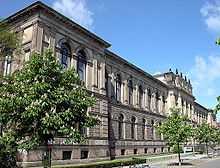Braunschweig
| Braunschweig | |||
|---|---|---|---|
|
Kohlmarkt | |||
| |||
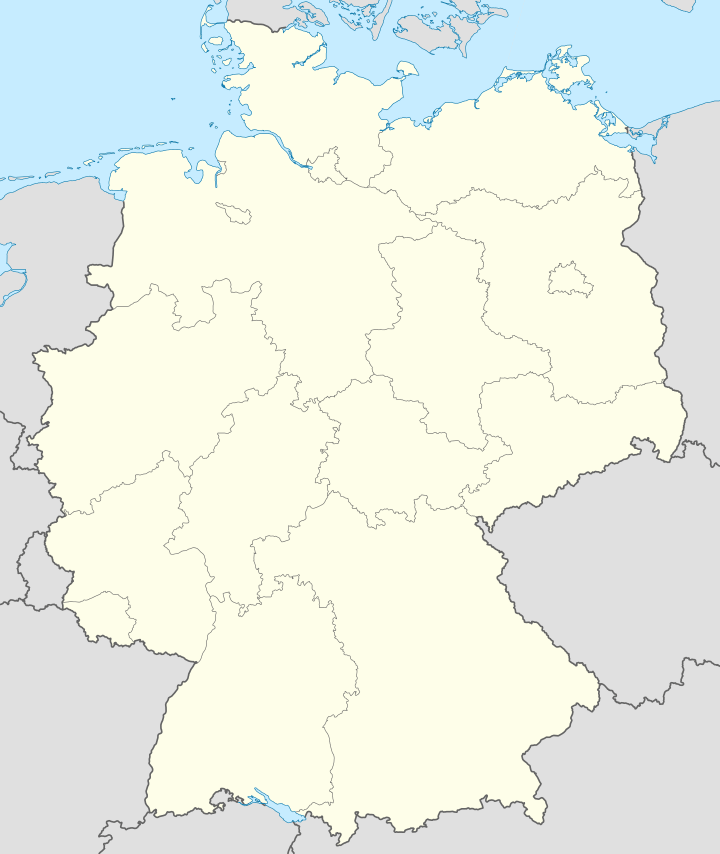 Braunschweig | |||
Location of Braunschweig within Lower Saxony  | |||
| Coordinates: 52°16′N 10°31′E / 52.267°N 10.517°ECoordinates: 52°16′N 10°31′E / 52.267°N 10.517°E | |||
| Country | Germany | ||
| State | Lower Saxony | ||
| District | Urban district | ||
| Founded | 9th century | ||
| Government | |||
| • Lord Mayor | Ulrich Markurth (SPD) | ||
| Area | |||
| • City | 192.13 km2 (74.18 sq mi) | ||
| Population (2013-12-31)[1] | |||
| • City | 247,227 | ||
| • Density | 1,300/km2 (3,300/sq mi) | ||
| • Metro | 1,150,000[2] | ||
| Time zone | CET/CEST (UTC+1/+2) | ||
| Postal codes | 38100–38126 | ||
| Dialling codes | 0531, 05307, 05309 | ||
| Vehicle registration | BS | ||
| Website | www.braunschweig.de | ||
Braunschweig or Brunswick (German pronunciation: [ˈbʁaʊ̯nʃvaɪ̯k]; Low German: Brunswiek [ˈbrɔˑnsviːk]; English: Brunswick[3]), is a city of 250,556 people,[4] located in the state of Lower Saxony, Germany. It is located north of the Harz mountains at the farthest navigable point of the Oker river, which connects to the North Sea via the rivers Aller and Weser. A powerful and influential centre of commerce in medieval Germany, Braunschweig was a member of the Hanseatic League from the 13th until the 17th century, and the capital of the state of Brunswick until its disestablishment in 1946. Today, Braunschweig is also a major centre of scientific research and development.[5]
History
Foundation and early history
The date and circumstances of the town's foundation are unknown. Tradition maintains that Braunschweig was created through the merger of two settlements, one founded by Brun(o), a Saxon count who died in 880, on one side of the river Oker – the legend gives the year 861 for the foundation – and the other the settlement of a legendary Count Dankward, after whom Dankwarderode Castle (Dankward's clearing), which was reconstructed in the 19th century, is named.[6] The town's original name of Brunswik is a combination of the name Bruno and Low German wik, a place where merchants rested and stored their goods. The town's name therefore indicates an ideal resting-place, as it lay by a ford across the Oker River. Another explanation of the city's name is that it comes from Brand, or burning, indicating a place which developed after the landscape was cleared through burning.[7] The city was first mentioned in documents from the St. Magni Church from 1031, which give the city's name as Brunesguik.[6]
Middle Ages and early modern period

| Historical population | ||
|---|---|---|
| Year | Pop. | ±% |
| 1330 | 16,000 | — |
| 1550 | 16,000 | +0.0% |
| 1671 | 15,500 | −3.1% |
| 1758 | 22,500 | +45.2% |
| 1788 | 26,000 | +15.6% |
| 1811 | 27,600 | +6.2% |
| 1830 | 35,300 | +27.9% |
| 1849 | 39,000 | +10.5% |
| 1880 | 75,000 | +92.3% |
| 1890 | 100,000 | +33.3% |
| 1900 | 128,200 | +28.2% |
| 1925 | 146,900 | +14.6% |
| 1939 | 196,068 | +33.5% |
| 1950 | 223,767 | +14.1% |
| 1975 | 269,900 | +20.6% |
| 1989 | 253,794 | −6.0% |
| 2004 | 239,921 | −5.5% |
| 2010 | 248,867 | +3.7% |
Up to the 12th century Braunschweig was ruled by the Saxon noble family of the Brunonen, then, through marriage, it fell to the House of Welf. In 1142 Henry the Lion of the House of Welf became Duke of Saxony and made Braunschweig the capital of his state (which, from 1156 on, also included the Duchy of Bavaria). He turned Dankwarderode Castle, the residence of the counts of Braunschweig, into his own Pfalz and developed the city further to represent his authority. Under Henry's rule the Cathedral of St. Blasius was built and he also had the statue of a lion, his heraldic animal, erected in front of the castle. The lion subsequently became the city's landmark.
Henry the Lion became so powerful that he dared to refuse military aid to the emperor Frederick I Barbarossa, which led to his banishment in 1182. Henry went into exile in England. He had previously established ties to the English crown in 1168, through his marriage to King Henry II of England's daughter Matilda, sister of Richard the Lionheart.[8] However, his son Otto (IV), who could regain influence and was eventually crowned Holy Roman Emperor, continued to foster the city's development.
During the Middle Ages Braunschweig was an important center of trade, one of the economic and political centers in Northern Europe and a member of the Hanseatic League from the 13th century to the middle of the 17th century.[9] By the year 1600, Braunschweig was the seventh largest city in Germany.[10] Although formally one of the residences of the rulers of the Duchy of Brunswick-Lüneburg, a constituent state of the Holy Roman Empire, Braunschweig was de facto ruled independently by a powerful class of patricians and the guilds throughout much of the Late Middle Ages and the Early modern period. Because of the growing power of Braunschweig's burghers, the Princes of Brunswick-Wolfenbüttel, who ruled over one of the subdivisions of Brunswick-Lüneburg, finally moved their Residenz out of the city and to the nearby town of Wolfenbüttel in 1432.[11] The Princes of Brunswick-Wolfenbüttel didn't regain control over the city until the late 17th century, when Rudolph Augustus, Duke of Brunswick-Lüneburg, took the city by siege.[12] In the 18th century Braunschweig was not only a political, but also a cultural centre. Influenced by the philosophy of the Enlightenment, dukes like Anthony Ulrich and Charles I became patrons of the arts and sciences. In 1745 Charles I founded the Collegium Carolinum, predecessor of the Braunschweig University of Technology, and in 1753 he moved the ducal residence back to Braunschweig. With this he attracted poets and thinkers such as Lessing, Leisewitz, and Jakob Mauvillon to his court and the city.[13] Emilia Galotti by Lessing and Goethe's Faust were performed for the first time in Braunschweig.[14]
19th and early 20th century

In 1806 the city was captured by the French during the Napoleonic Wars and became part of the short-lived Napoleonic Kingdom of Westphalia in 1807. After the Congress of Vienna in 1815 Braunschweig was made capital of the reestablished independent Duchy of Brunswick, later a constituent state of the German Empire from 1871. During the 19th century industrialisation caused a rapid growth of population in the city, eventually causing Braunschweig to be for the first time significantly enlarged beyond its medieval fortifications and the river Oker.[15]
At the end of World War I, on 8 November 1918, a socialist Workers' council forced Duke Ernest Augustus to abdicate his throne. On 10 November the council proclaimed the Socialist Republic of Brunswick under a one party government of the Independent Social Democratic Party of Germany (USPD). However, the subsequent elections on 22 December 1918 were won by the Social Democratic Party of Germany (MSPD), and USPD and MSPD formed a coalition government. In 1919 an uprising in Braunschweig, led by the communist Spartacus League, was defeated when Freikorps troops under Georg Ludwig Rudolf Maercker, by order of German Minister of Defence Gustav Noske, took over the city. Subsequently, a SPD-led government was established, and in December 1921 the new constitution of the Free State of Brunswick, now a parliamentary republic within the Weimar Republic, again with Braunschweig as its capital, was approved.[16] During World War II thousands of forced Eastern workers were brought to the city. During the years 1943–1945 at least 360 children taken away from the workers died in the Entbindungsheim für Ostarbeiterinnen.[17]

During the war, Braunschweig was a Sub-area Headquarters (Untergebiet Hauptquartier) of Military District (Wehrkreis) XI. It was also the garrison city of the 31st Infanterie Division, which took part in the invasions of Poland, Belgium, France, and Russia, and was largely destroyed during the German withdrawal from Russia. The city was severely damaged by Anglo-American aerial attacks. The air raid on October 15, 1944 destroyed most of the Altstadt (old town), which had been the largest ensemble of half-timbered houses in Germany, as well as most of the churches. The cathedral, which had been converted to a national shrine (German: Nationale Weihestätte) by the Nazi government,[18] still stood.
Postwar period to the 21st century
After the war, Braunschweig ceased to be a capital when the Free State of Brunswick was dissolved by the Allied occupying authorities (most of its lands were incorporated in the newly formed state of Lower Saxony). The cathedral was restored to its function as a Protestant church. The rebuilding of the city was intended to make it modern and automobile-oriented. A small section of the Altstadt survived the bombing and remains quite distinctive.
On 28 February 1974, as part of a district reform in Lower Saxony, the rural district of Braunschweig, which had surrounded the city, was disestablished. The major part of the former district was incorporated into the city of Braunschweig, increasing its population by roughly 52,000 people.[19]
In the 1990s efforts increased to reconstruct historic buildings that had been destroyed in the air raid. Buildings such as the Alte Waage (originally built in 1534) and the facade of the Braunschweiger Schloss now stand again in their pre-war glory.
Demographics
As of 2011, there were about 20,000 non-German citizens living in the city of Braunschweig. The following table lists up the largest minority groups:
| Rank | Nationality | Population (2013) |
|---|---|---|
| 1 | 5,319 | |
| 2 | 3,115 | |
| 3 | 1,318 | |
| 4 | 902 | |
| 5 | 658 | |
| 6 | 655 | |
| 7 | 489 | |
| 8 | 422 | |
Main sights
- The Burgplatz (Castle Square), comprising a group of buildings of great historical and cultural significance: the Cathedral (St Blasius, built at the end of the 12th century), the Burg Dankwarderode (Dankwarderode Castle) (a 19th-century reconstruction of the old castle of Henry the Lion), the Neo-Gothic Town Hall (built in 1893–1900), as well as some picturesque half-timbered houses, such as the Gildehaus (Guild House), today the seat of the Craftsman's Association. In the centre of the square stands a copy of the Burglöwe (Brunswick Lion), a Romanesque statue of a Lion, cast in bronze in 1166. The original statue can be seen in the museum of Dankwarderode Castle. Today the lion has become the true symbol of Braunschweig.
- The Altstadtmarkt ("Old Town market"), surrounded by the Old Town town hall (built between the 13th and the 15th centuries in Gothic style), and the Martinikirche (Church of Saint Martin, from 1195), with important historical houses including the Gewandhaus (the former house of the drapers' guild, built sometime before 1268) and the Stechinelli-Haus (built in 1690) and a fountain from 1408.
- The Kohlmarkt ("coal market"), a market with many historical houses and a fountain from 1869.
- The Hagenmarkt ("Hagen market"), with the 13th century Katharinenkirche (Church of Saint Catherine) and the Heinrichsbrunnen ("Henry the Lion's Fountain") from 1874.
- The Magniviertel (St Magnus' Quarter), a remainder of ancient Braunschweig, lined with cobblestoned streets, little shops and cafés, centred around the 13th-century Magnikirche (St Magnus' Church). Here is also the Rizzi-Haus, a highly distinctive, cartoonish office building designed by architect James Rizzi for the Expo 2000.
- The Romanesque and Gothic Andreaskirche (Church of Saint Andrew), built mainly between the 13th and 16th centuries with stained glass by Charles Crodel. Surrounding the church are the Liberei, the oldest surviving freestanding library building in Germany,[20][21] and the reconstructed Alte Waage.
- The Gothic Aegidienkirche (Church of Saint Giles), built in the 13th century, with an adjoining monastery, which is today a museum.
- The Staatstheater (State Theatre), newly built in the 19th century, goes back to the first standing public theatre in Germany, founded in 1690 by Duke Anthony Ulrich.
- The ducal palace of Braunschweig was bombed in World War II and demolished in 1960. The exterior was rebuilt to contain a palace museum and shopping centre, which opened in 2007.
- The baroque palace Schloss Richmond ("Richmond Palace"), built between 1768 and 1769 with a surrounding English garden for Princess Augusta of Great Britain, wife of Charles William Ferdinand, Duke of Brunswick-Wolfenbüttel, to remind her of her home in England.
- Riddagshausen Abbey (German: Kloster Riddagshausen), a former Cistercian monastery, with the surrounding nature reserve and arboretum. The nature reserve Riddagshäuser Teiche is designated as Important Bird Area[22] and Special Protection Area.[23]
|
Parks and gardens
Parks and gardens in the city include the botanical garden Botanischer Garten der Technischen Universität Braunschweig, founded in 1840 by Johann Heinrich Blasius, the Bürgerpark, the Löwenwall with an obelisk from 1825, the Prinz-Albrecht-Park, and the Inselwallpark. Other parks and recreation areas are Stadtpark, Westpark, Theaterpark, Museumpark, Heidbergsee, Südsee, Ölpersee, and the zoological garden Arche Noah Zoo Braunschweig.
|
Politics
Subdivisions
Braunschweig is made up of 19 boroughs (German: Stadtbezirke),[24] which themselves may consist of several quarters (German: Stadtteile)[25] each. The 19 boroughs, with their official numbers, are:
|
|
|
-
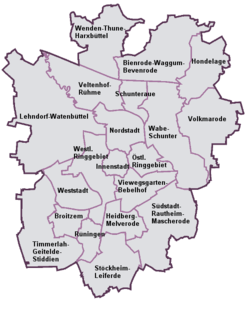
Boroughs of Braunschweig
-

Stadtteile of Braunschweig
-
Innenstadt
-
Östliches Ringgebiet
-
Westliches Ringgebiet
-

Weststadt
-

Riddagshausen (Wabe-Schunter-Beberbach)
1Formed in 2011 out of the former boroughs of Wabe-Schunter and Bienrode-Waggum-Bevenrode.
City council
The council of the city is made up of the fractions of the different parties (54 seats) and the lord mayor, who is elected directly, with one seat.
The current lord mayor of Braunschweig is Ulrich Markurth (SPD).
Results of the local elections on 11 September 2011:[26]
| Party | Seats | Votes (%) | Votes |
|---|---|---|---|
| CDU | 21 | 38,2% | 108.529 |
| SPD | 16 | 29,5% | 83.965 |
| Bündnis 90/Die Grünen | 9 | 17,4% | 49.357 |
| Bürgerinitiative Braunschweig | 3 | 4,8% | 13.649 |
| PIRATEN | 2 | 3,9% | 11.209 |
| Die Linke | 2 | 3,5% | 10.044 |
| FDP | 1 | 2,1% | 5.959 |
Voter turnout: 49.4%.
International relations
Twin towns – sister cities
Braunschweig is twinned with:[27]
Transport

Braunschweig's city centre is mostly a car-free pedestrian zone.
Automobile
Two main autobahns serve Braunschweig, the A2 (Berlin—Hanover—Dortmund) and the A39 (Salzgitter—Wolfsburg). City roads are generally wide, built after World War II to support the anticipated use of the automobile. There are several car parks in the city.
Bicycle
Many residents travel around town by bicycle using an extensive system of bicycle-only lanes. The main train station includes a bicycle parking area.
Train
The city is on the main rail line between Frankfurt and Berlin. Deutsche Bahn (German Railways) serves the city with local, inter-city and high-speed InterCityExpress (ICE) trains, with frequent stops at Braunschweig Central Station (German: Braunschweig Hauptbahnhof).[32]
Tram and bus
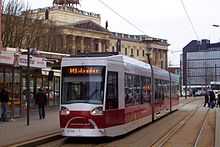
The Braunschweig tramway network is an inexpensive and extensive 35 km (22 mi) long electric tramway system. First opened in 1897, it has been modernized, including a 3.2 km (2.0 mi) extension in 2007.[33] The network has an 1,100 mm (3 ft 7 5⁄16 in) gauge, unique for a European railway or tramway network. However, it is being supplemented in stages by a third rail, to allow future joint working with the 1,435 mm (4 ft 8 1⁄2 in) standard gauge main railway network.
The municipally owned Braunschweiger Verkehrs-AG currently operates five tram lines and several bus lines. The tram lines are:[34]
| Line | from | to |
|---|---|---|
| M 1 | Wenden | Stöckheim |
| Tram 2 | Siegfriedviertel | Heidberg |
| M 3 | Volkmarode | Weststadt Weserstraße |
| Tram 4 | Radeklint | Helmstedter Straße |
| M 5 | Hauptbahnhof | Broitzem |
Air
The Braunschweig Airport (BWE / EDVE) is located north of the city at 52°19′N 10°33′E / 52.317°N 10.550°E, elev. 295 ft (90 m)
Name
Many other geographical locations are named after Braunschweig such as New Brunswick in Canada due to the personal union of the Electorate of Brunswick-Lüneburg (Electorate of Hanover) with Great Britain from 1714 to 1837 (see House of Hanover, also referred to as the House of Brunswick, Hanover line).[35] For a list of places named after Braunschweig see Brunswick (disambiguation).
Government offices
The offices of the Luftfahrt-Bundesamt (LBA, "Federal Aviation Office") and the German Federal Bureau of Aircraft Accidents Investigation (BFU) are located in Braunschweig.[36]
Research and science
Braunschweig has been an important industrial area. Today it is known for its University and research institutes, mainly the Johann Heinrich von Thuenen Institute, the Julius Kühn-Institut, and the Institute for Animal Food of the Friedrich Loeffler Institute, until the end of 2007 all part of the Federal Agricultural Research Centre, the German Collection of Microorganisms and Cell Cultures, and the Physikalisch-Technische Bundesanstalt (PTB). The PTB Braunschweig maintains the atomic clock responsible for the DCF77 time signal and the official German time. In 2006 the region of Braunschweig was the most R&D-intensive area in the whole European Economic Area investing 7.1% of its GDP for research & technology.[37] In 2014, the figure had risen to 7.7%, making Braunschweig retain its ranking as the most R&D-intensive region in Germany.[5] Braunschweig was named Germany's City of Science 2007 (German: Stadt der Wissenschaft 2007).[38]
Braunschweig University of Technology (German: Technische Universität Braunschweig) was founded in 1745 and is the oldest member of TU9, an incorporated society of the nine most prestigious, oldest, and largest universities focusing on engineering and technology in Germany. With approximately 18,000 students, Braunschweig University of Technology is the third largest university in Lower Saxony.
Education
Also located in Braunschweig is the Martino-Katharineum (German Wikipedia), a secondary school founded in 1415. It had such famous pupils as Carl Friedrich Gauss, Hoffmann von Fallersleben, Richard Dedekind and Louis Spohr.[39] Since 2004, Braunschweig also has an International School.[40] Other notable secondary schools include Gymnasium Gaussschule, Gymnasium Kleine Burg (German Wikipedia), Hoffmann-von-Fallersleben-Schule Braunschweig (German Wikipedia), Integrierte Gesamtschule Franzsches Feld (German Wikipedia), and Wilhelm-Gymnasium (German Wikipedia).
Lower Saxony's only university of art, founded in 1963, can be found in Braunschweig, the Hochschule für Bildende Künste Braunschweig (Braunschweig College of Fine Arts).[41] The HBK is an institution of higher artistic and scientific education and offers the opportunity to study for interdisciplinary artistic and scientific qualifications. Additionally, one of the campuses of the Eastphalia University of Applied Sciences (German: Ostfalia Hochschule für angewandte Wissenschaften, formerly Fachhochschule Braunschweig/Wolfenbüttel) was located in the city until 2010.
Economy
Braunschweig was one of the centres of the industrialization in Northern Germany. During the 19th and early 20th century the canning and railroad industries and the sugar production were of great importance for Braunschweig's economy,[42] but eventually other branches such as the automotive industry became more important, while especially the canning industry began to vaish from the city after the end of World War II.[43] The defunct truck and bus manufacturer Büssing was headquartered in Braunschweig. Current factories in the city include Volkswagen, Siemens, Bombardier Transportation, and Bosch.
The fashion label NewYorker, the publishing house Westermann Verlag, Nordzucker, Volkswagen Financial Services and Volkswagen Bank have their headquarters in the city. Also two major optical companies were headquartered in Braunschweig: Voigtländer and Rollei.
During the 1980s and early 1990s the computer companies Atari and Commodore International both had branches for development and production within the city.[44][45]
Braunschweig is the home of two piano companies, both known worldwide for the high quality of their instruments: Schimmel and Grotrian-Steinweg. Both companies were founded in the 19th century. Additionally Sandberg Guitars is based in Braunschweig.
Culture
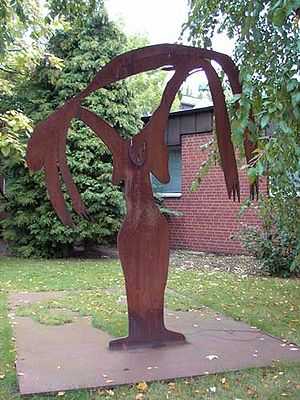
Braunschweig is famous for Till Eulenspiegel, a medieval jester who played many practical jokes on its citizens. It also had many breweries, and still a very peculiar kind of beer is made called Mumme, first quoted in 1390, a malt-extract that was shipped all over the world. Two major breweries still produce in Braunschweig, the Hofbrauhaus Wolters, founded in 1627, and the former Feldschlößchen brewery, originally founded in 1871, now operated by Oettinger Beer.
Braunschweiger Mettwurst is named after the city.
Media
Braunschweig's major local newspaper is the Braunschweiger Zeitung, first published in 1946. Papers formerly published in Braunschweig include the Braunschweigische Anzeigen/Braunschweigische Staatszeitung (1745–1934), the Braunschweigische Landeszeitung (1880–1936) and the Braunschweiger Stadtanzeiger/Braunschweiger Allgemeiner Anzeiger (1886–1941), and the social-democratic Braunschweiger Volksfreund (1871–1933).
Near Braunschweig at Cremlingen-Abbenrode, there is a large medium wave transmitter, which transmits the program of Deutschlandfunk on 756 kHz, the Cremlingen transmitter.
Festivals
Schoduvel, a medieval Northern German form of carnival was celebrated in Braunschweig as early as the 13th century.[46] Since 1979 an annual Rosenmontag parade is held in Braunschweig, the largest in Northern Germany, which is named Schoduvel in honour of the medieval custom.[47]
An annual Weihnachtsmarkt (christmas market) is held in late November and December on the Burgplatz in the centre of Braunschweig. In 2008 the market had 900,000 visitors.[48]
Museums and galleries
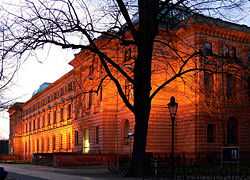

The city's most important museum is the Herzog Anton Ulrich Museum, a well known art museum and the oldest public museum in Germany, founded in 1754. It houses a collection of masters of Western art, including Dürer, Giorgione, Cranach, Holbein, Van Dyck, Vermeer, Rubens, and Rembrandt. It is currently closed for renovation until 2014.
The State Museum of Brunswick (Braunschweigisches Landesmuseum), founded in 1891, houses a permanent collection documenting the history of the Brunswick area ranging from its early history to the present.
The Municipal Museum of Brunswick (Städtisches Museum Braunschweig), founded in 1861, is a museum for art and cultural history, documenting the history of the city of Braunschweig.
The State Natural History Museum is a zoology museum founded in 1754.
Other museums in the city include the Museum of Photography (Museum für Photographie), the Jewish Museum (Jüdisches Museum), the Museum for Agricultural Technology Gut Steinhof, and the Gerstäcker-Museum. Frequent exhibitions of contemporary art are also held by the Art Society of Braunschweig (German: Kunstverein Braunschweig), housed in the Villa Salve Hospes, a classicist villa built between 1805 and 1808.
Music and dance
The Braunschweig Classix Festival was an annual classical music festival. It is the largest promoter of classical music in the region and one of the most prominent music festivals in Lower Saxony.
From 2001 to 2009, and again since 2013, the annual finals of the international breakdance competition Battle of the Year have been held at the Volkswagen Halle in Braunschweig.[49]
Braunschweiger TSC is among the leading competitive formation dance teams in the world and has won multiple World and European championship titles.[50]
Sports


Braunschweig's major local football (soccer) team is Eintracht Braunschweig. Founded in 1895, Eintracht Braunschweig can look back on a long and chequered history. Eintracht Braunschweig won the German football championship in 1967, and currently plays in the 2. Bundesliga, the second tier of German football, and attracts a large number of supporters. Braunschweig was also arguably the city in which the first ever game of football in Germany took place. The game had been brought to Germany by the local school teacher Konrad Koch, also the first to write down a German version of the rules of football,[nb 1] who organized the first match between pupils from his school Martino-Katharineum in 1874.[51] The 2011 German drama film Lessons of a Dream is based on Koch.
The New Yorker Lions (formerly Braunschweig Lions) are the city's American football team, winning a record number of nine German Bowl titles, as well as two Eurobowls.
The city's professional basketball team, the Basketball Löwen Braunschweig, plays in the Basketball Bundesliga, the highest level in Germany. The Löwen's farm team SG Braunschweig plays in the third tier Pro B-League. Eintracht Braunschweig's women's basketball team plays in the 2. Damen-Basketball-Bundesliga, the second tier of women's basketball in Germany.
Other sports in which Braunschweig has or had Bundesliga or 2nd Bundesliga teams include baseball (Spot Up 89ers), field hockey (Eintracht Braunschweig and Braunschweiger THC), field handball (Eintracht Braunschweig), team handball (MTV Braunschweig and SV Süd Braunschweig), ice hockey (Eintracht Braunschweig), rugby union (Rugby-Welfen Braunschweig), volleyball (USC Braunschweig), and water polo (Eintracht Braunschweig).
Annual sporting events held in Braunschweig include the international equestrian tournament Löwen Classics, Rund um den Elm, Germany's oldest road bicycle race,[52] and the professional tennis tournament Sparkassen Open.
Notable people
See also: Category:People from Braunschweig
Alphabetical list of some notable people associated with Braunschweig:
- Hermann Blumenau (1819–1899), founder of Blumenau, Brazil
- Johann Joachim Christoph Bode (1731–1793), translator
- Bosse (born 1980), rock musician
- Wilhelm Bracke (1842–1880), one of the founders of the Social Democratic Workers' Party of Germany, predecessor of the Social Democratic Party of Germany.
- Heinrich Büssing (1843–1929), industrialist
- Axel Freiherr von dem Bussche-Streithorst (1919–1993), military officer and member of the German resistance.
- Joachim Heinrich Campe (1746–1818), educator and writer
- Caroline of Brunswick (1768–1821), Queen consort of King George IV of the United Kingdom
- Richard Dedekind (1831–1916), mathematician
- Paul Drude (1863–1906), physicist, developed the Drude model.
- Christine Enghaus (1815–1910), actress
- Johann Joachim Eschenburg (1743–1820), produced the first complete German translation of William Shakespeare's plays.
- Oskar Fehr (1871–1959), ophthalmologist
- Frederick William, Duke of Brunswick-Wolfenbüttel (1771–1815), leader of the Black Brunswickers.
- Carl Friedrich Gauss (1777–1855), mathematician
- Friedrich Gerstäcker (1816–1872), writer
- Gerhard Glogowski (born 1943), politician
- Otto Grotewohl (1894–1964), Prime minister of the German Democratic Republic
- Otto Harder (1892–1956), German international footballer
- Adolph Henke (1775-1843), physician
- Henry the Lion (1129–1195), Duke of Saxony and Bavaria
- August Heinrich Hoffmann von Fallersleben (1798–1874), poet and author of Das Lied der Deutschen.
- Ricarda Huch (1864–1947), historian and writer
- Ernst August Friedrich Klingemann (1777–1831), writer
- Gustav Knuth (1901–1987), actor
- Alfred Kubel (1909–1999), politician
- August Lafontaine (1758–1831), author of sentimental didactic novels once immensely popular, born and brought up in the city[53]
- Johann Anton Leisewitz (1752–1806), poet
- Gotthold Ephraim Lessing (1729–1781), philosopher
- Otto IV of Brunswick (1175–1218), Holy Roman Emperor
- Bernhard Plockhorst (1825–1907), painter
- Agnes Pockels (1862–1935), chemist
- Wilhelm Raabe (1831–1910), writer
- Friedrich Adolf Riedesel (1738–1800), commander during the American Revolutionary War
- Galka Scheyer (1889–1945), painter
- Dennis Schröder (born 1993), NBA basketball player, currently with Atlanta Hawks
- Norbert Schultze (1911–2002), composer
- Hans Sommer (1837–1922), composer and mathematician
- Louis Spohr (1784–1859), composer
- Henry E. (1797–1871) and C.F. Theodore Steinway (1825–1889), piano makers
- Ludger Tom Ring the Younger (1522–1584), painter
- Friedrich Georg Weitsch (1758–1828), painter
See also
- Metropolitan region Hannover-Braunschweig-Göttingen-Wolfsburg
Notes
- ↑ However, Koch's original German version of the rules of football, published in 1875, still resembled Rugby football - the unmodified rules of The Football Association weren't commonly used in Germany before the 1900s.
References
- ↑ Landesbetrieb für Statistik und Kommunikationstechnologie Niedersachsen, 102 Bevölkerung - Basis Zensus 2011, Stand 31. Dezember 2013 (Tabelle K1020014)
- ↑ Regionales Energiekonzept für den Großraum Braunschweig. Retrieved on August 16, 2012.
- ↑ "Brunswick" (definition 2), The American Heritage Dictionary p. 245 3d. ed. 1992
- ↑ "Bevölkerungsfortschreibung" (in German). Landesbetrieb für Statistik und Kommunikationstechnologie Niedersachsen. December 31, 2011. Accessed August 5, 2012.
- ↑ 5.0 5.1 "Research and innovation statistics at regional level". http://ec.europa.eu. 2014.
- ↑ 6.0 6.1 Die Ersterwähnung von "Brunesguik" und die Gründungssage (in German). Retrieved on August 11, 2012.
- ↑ Moderhack, Richard (1997). Braunschweiger Stadtgeschichte (in German). pp. 14–15 and 21.
- ↑ The Lion City of Brunswick
- ↑ Moderhack 1997, pp. 50–52
- ↑ Camerer; Garzmann; Pingel; Schuegraf (1996). Braunschweiger Stadtlexikon (in German) (4th ed.). p. 66.
- ↑ Moderhack 1997, pp. 60–69
- ↑ Moderhack 1997, pp. 119–123
- ↑ Moderhack 1997, pp. 136–141
- ↑ Camerer et al. 1996, p. 215
- ↑ Geschichte des Östliche Ringgebiets (in German). Retrieved on February 16, 2013.
- ↑ Moderhack 1997, pp. 193–195
- ↑ "Entbindungsheim für Ostarbeiterinnen" at http://www.vernetztes-gedaechtnis.de/ (in German). Retrieved on August 11, 2012.
- ↑ Der Dom Sankt Blasius at http://www.vernetztes-gedaechtnis.de/ (in German). Retrieved on August 11, 2012.
- ↑ Stadtchronik Braunschweig: 1974 (in German). Retrieved on 24 September 2013.
- ↑ Stadlmayer, Tina (2012). Wo Braunschweigs erste Bücher standen (in German). Merlin-Verlag. p. 7.
- ↑ Arnhold, Elmar (2010). Mittelalterliche Kirchen in Braunschweig (in German). p. 34.
- ↑ BirdLife Data Zone. Retrieved on November 4, 2012.
- ↑ EUNIS Site factsheet. Retrieved on November 4, 2012.
- ↑ The 19 boroughs of Braunschweig at www.braunschweig.de
- ↑ The quarters of Braunschweig at www.braunschweig.de
- ↑ Stadt Braunschweig, Referat Stadtentwicklung und Statistik – Kommunalwahl 2011 – Wahl des Rates – Gesamtergebnis
- ↑ 27.0 27.1 27.2 27.3 27.4 27.5 27.6 27.7 27.8 27.9 "Braunschweigs Partner und Freundschaftsstädte" [Braunschweig - Partner and Friendship Cities]. Stadt Braunschweig [City of Braunschweig] (in German). Archived from the original on 2012-12-01. Retrieved 2013-08-07.
- ↑ "Bath's Twinning Associations". The Mayor of Bath. Retrieved 2013-07-15.
- ↑ "Town Twinning". Bath and North East Somerset Council. Archived from the original on 27 October 2007. Retrieved 12 December 2007.
- ↑ Zachert, Uwe; Annica Kunz. "Twin cities". Landeshauptstadt Magdeburg [City of Magdeburg]. Archived from the original on 2012-09-01. Retrieved 2013-08-07.
- ↑ "The History of Omaha Sister Cities Association." Omaha Sister Cities Association. Retrieved 12/8/08.
- ↑ For a history of rail transport in the state, see Holtge, Dieter. "Braunschweig's Eisenbahnen und Strassenbahnen." (1972).
- ↑ "Braunschweig (Germany): New light rail tram line to suburbs reverses Transit Holocaust, February 13, 2007". Light Rail Now. Retrieved April 7, 2011.
- ↑ Tram and bus lines in Braunschweig. Retrieved on October 2nd, 2012.
- ↑ Canadian Heritage - New Brunswick. Retrieved on August 11, 2012.
- ↑ "Location." German Federal Bureau of Aircraft Accidents Investigation. Retrieved on February 21, 2009.
- ↑ "R&D expenditure in Europe" (PDF). Eurostat. 2006.
- ↑ "Stadt der Wissenschaft 2007: Braunschweig" (in German). www.stadt-der-wissenschaft.de. 2007.
- ↑ "Bedeutende Schüler und Lehrer des MK" (in German). Retrieved August 24, 2012.
- ↑ International School Braunschweig-Wolfsburg. Retrieved on August 15, 2012.
- ↑ "Startseite – HBK Hochschule für Bildende Künste Braunschweig". Hbk-bs.de. Retrieved April 7, 2011.
- ↑ Industrieller Aufbruch (in German). Retrieved on August 11, 2012.
- ↑ Nachkriegszeit (in German). Retrieved on August 11, 2012.
- ↑ Atari kam aus Braunschweig (in German). Retrieved on January 22, 2013.
- ↑ Commodore bald aus Braunschweig (in German). Published June 6, 1980. Retrieved on January 22, 2013.
- ↑ Søndergaard, Leif. "Carnival is Festival: Dances as Entertainment". Retrieved 8 October 2012.
- ↑ "Braunschweiger Karneval "Schoduvel"" (in German). Retrieved 8 October 2012.
- ↑ "900 000 Besucher auf dem Weihnachtsmarkt" (in German). Retrieved 8 October 2012.
- ↑ "About BOTY". Retrieved 27 August 2012.
- ↑ "List of World and European champions". Retrieved 27 August 2012.
- ↑ "Die Wiege des Fußballs stand in Braunschweig" (PDF) (in German). Retrieved 8 August 2012.
- ↑ Hoffmeister, Kurt (2010). Zeitreise durch die Braunschweiger Sportgeschichte: 180 Jahre Turnen und Sport in Braunschweig (in German). p. 43.
- ↑ Lengthy study in a German weekly paper, Die Zeit, 29 July 1999. Retrieved 8 August 2012.
External links
 |
Bremen | Hamburg | Wolfsburg, Berlin |  |
| Hanover, Osnabrück | |
Magdeburg | ||
| ||||
| | ||||
| Paderborn, Bielefeld | Göttingen, Kassel | Halle |
| ||||||||||||||
| ||||||||||||||||||||||||||||||||||||||||||||||||||||||||


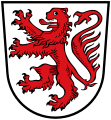
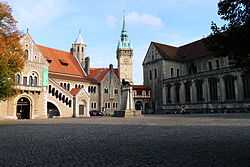
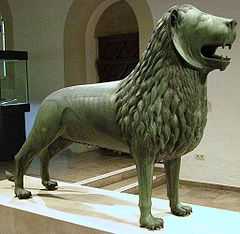
.jpg)



.jpg)
.jpg)


.jpg)
.jpg)


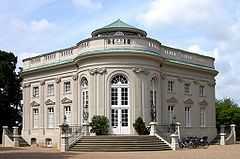
.jpg)






